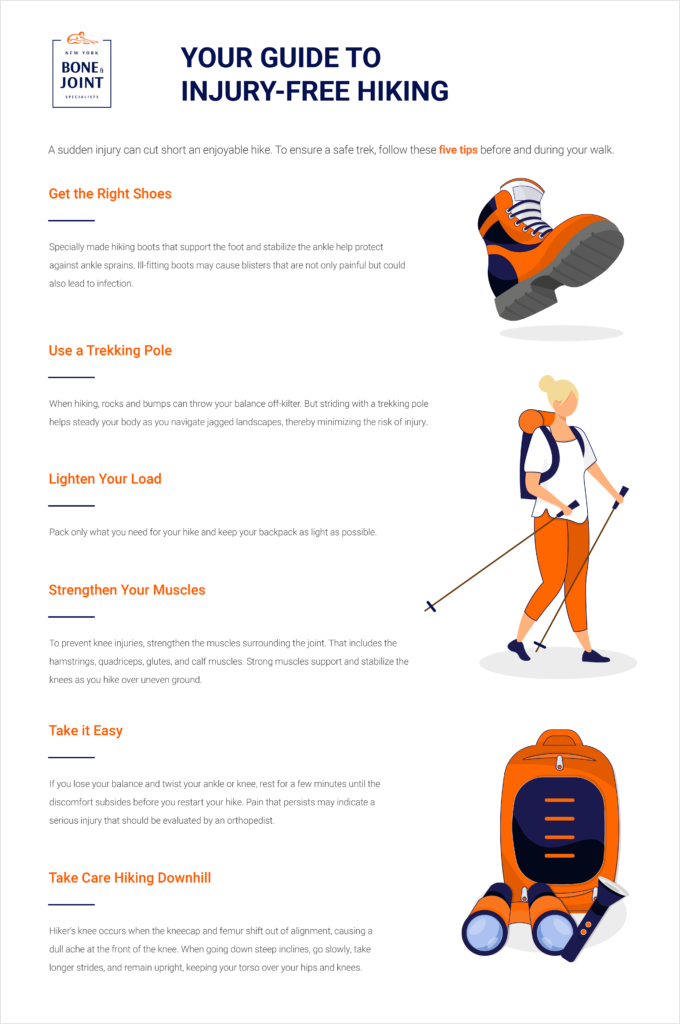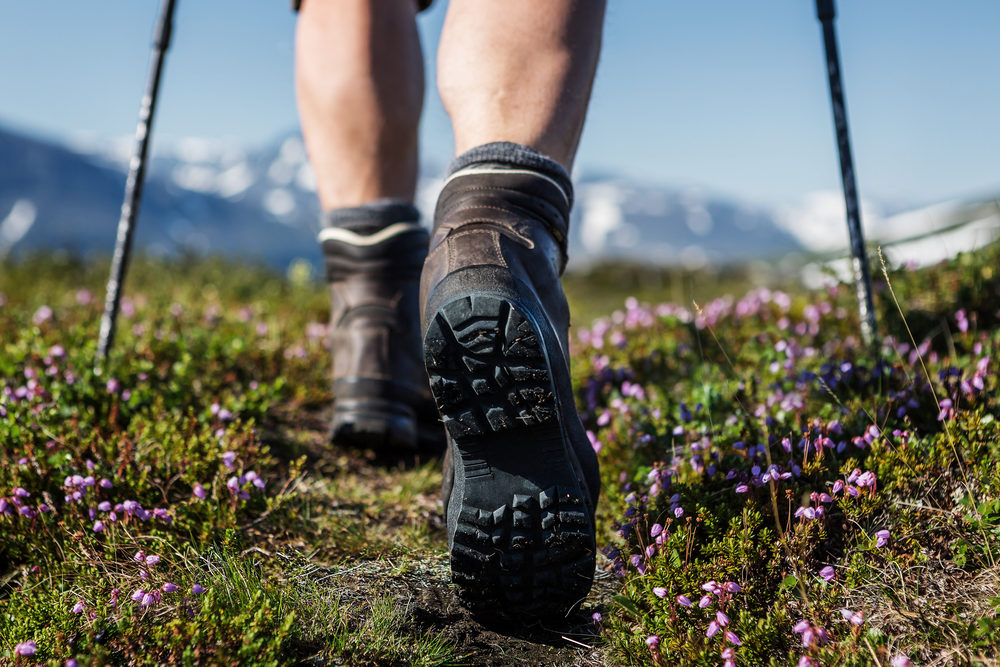Before you take off on the trail, follow these precautions to protect yourself from injury.
Hiking is a wonderful way to exercise any time of year. Not only is it a great aerobic, heart-healthy workout, you get to enjoy the beauty of nature rather than being cooped up in the gym. But as with any exercise program, orthopedic injuries can happen if you aren’t careful.
Ankle sprains and knee injuries are common among hikers. Hiking on slippery slopes or uneven terrain may force your natural gait out of sync, causing a twisted ankle, hyperextended knee, torn ligament or tendon, or a bad fall that breaks a bone. So before you map out your hiking trail, take some precautions to prevent an injury.

How to Prevent Hiking Injuries
A sudden injury can cut short an enjoyable hike. To ensure a safe trek, follow these five tips before and during your walk.
Get the Right Shoes. Preventing hiking injuries starts with proper footwear. Specially made hiking boots that support the foot and stabilize the ankle help protect against ankle sprains. Sporting goods stores carry a good selection of hiking boots, so you should be able to find a well-fitting, comfortable pair. If you have a pair of older hiking boots, inspect the tread. A worn-down tread provides little stability and means it’s time to invest in new boots. Ill-fitting boots may also cause blisters that are not only painful, but could also lead to infection.
Use a Trekking Pole. When hiking, rocks and bumps can throw your balance off-kilter. But striding with a trekking pole helps steady your body as you navigate jagged landscapes, thereby minimizing the risk of a knee or ankle injury. Depending on whether you’re going up or down a trail, you can adjust the length of the trekking pole to maintain your balance and take pressure off your knees.
Lighten Your Load. Depending on the length of your hike, you may need food and water to fuel your trek. But if you overload your backpack, you’re likely to tip over and wrench your knee on a rocky trail. Pack only what you need and keep the backpack as light as possible.
Strengthen Your Muscles. To prevent knee injuries, strengthen the muscles surrounding the joint. That includes the hamstrings, quadriceps, glutes, and calf muscles. Strong muscles support and stabilize the knees as you hike over uneven ground. You can also add extra support by wearing a knee brace.
Take it Easy. Much of the pleasure of a hike comes from strolling at a brisk but comfortable pace. If you become tired or overheated, it’s time for a break to rest and recharge. If you lose your balance and twist your ankle or knee, rest for a few minutes until the discomfort subsides before you restart your hike. Pain that persists, however, may indicate a serious injury that should be evaluated by an orthopedist as soon as you’re off the trail.
Take Care Hiking Downhill. Going uphill may seem more arduous, but hiking downhill can be harder on the knees. Hiker’s knee, also known as runner’s knee or patellofemoral syndrome, occurs when the kneecap (patella) and femur (thigh) bone shift out of alignment, causing a dull ache at the front of the knee. When going down steep inclines, go slowly, take longer strides, and remain upright, keeping your torso over your hips and knees.
Hiking Injuries? Visit an Orthopedist
Severe knee or ankle pain following a hike should be evaluated by an orthopedist. At New York Bone & Joint Specialists, our doctors have treated many orthopedic injuries and can get you back on the trail with customized therapies. Contact us today for a consultation.




